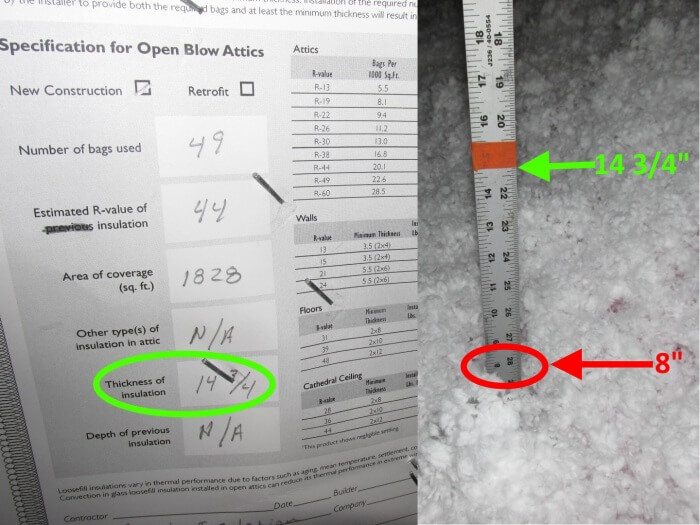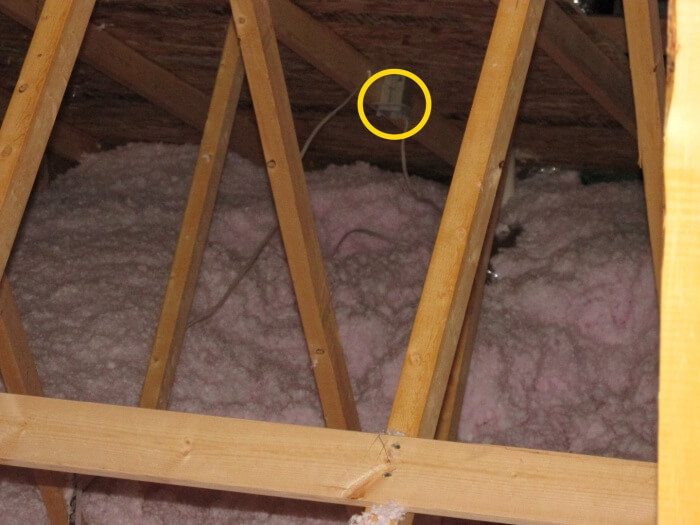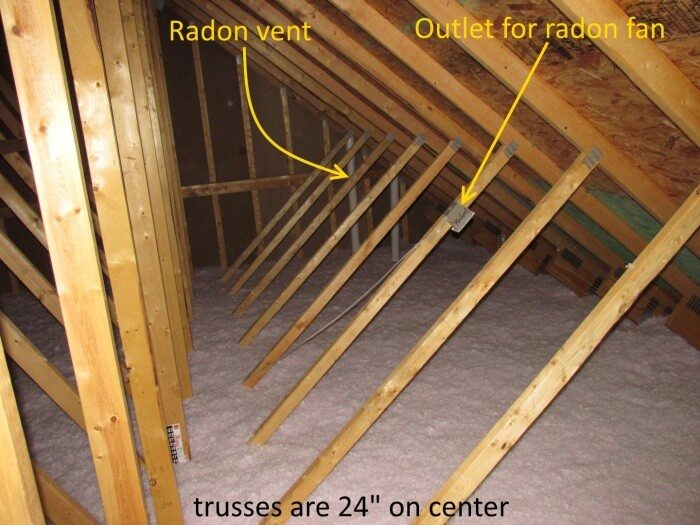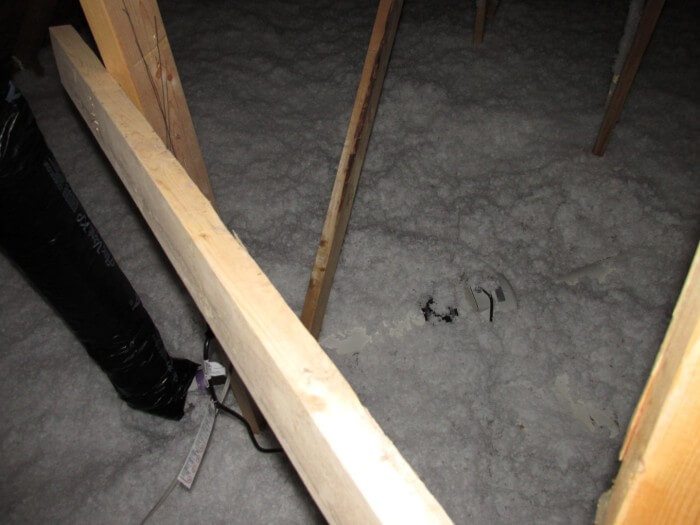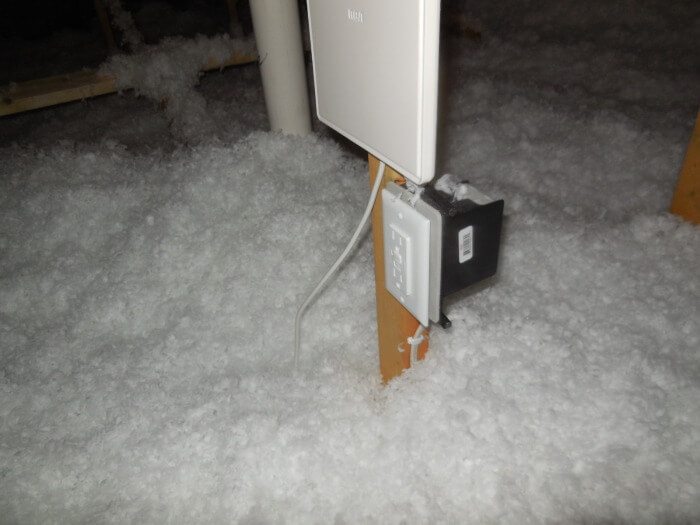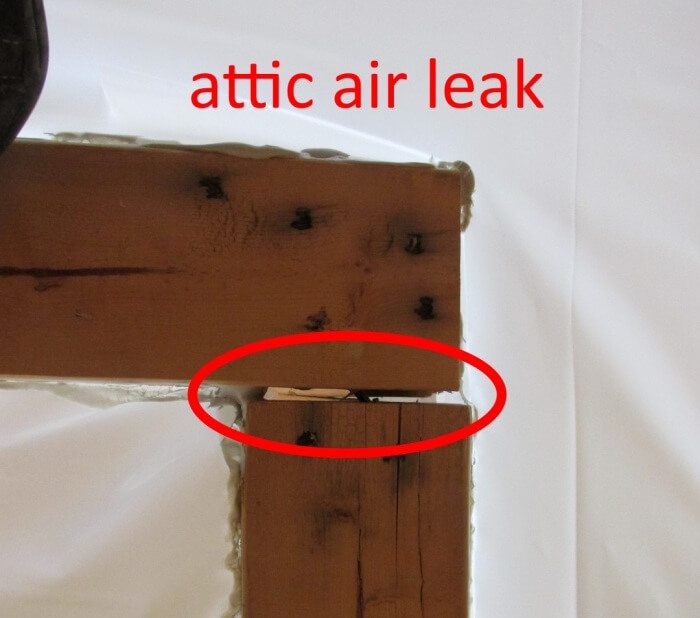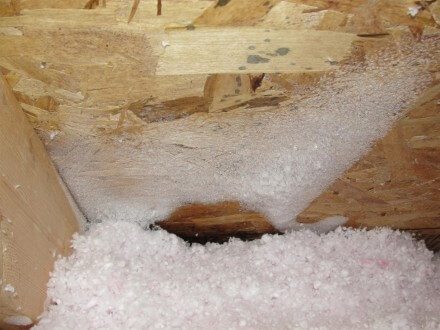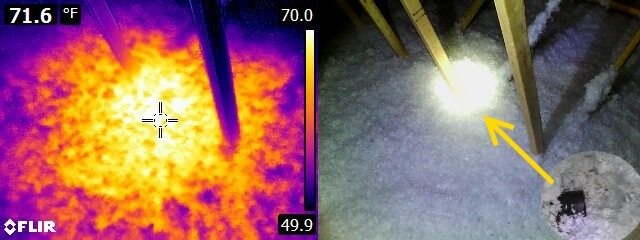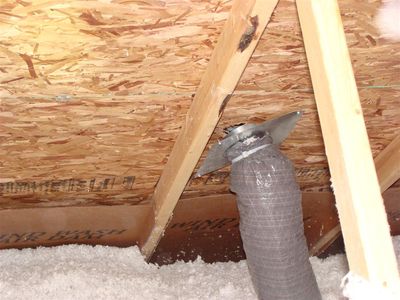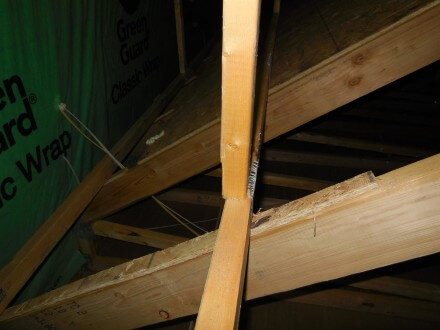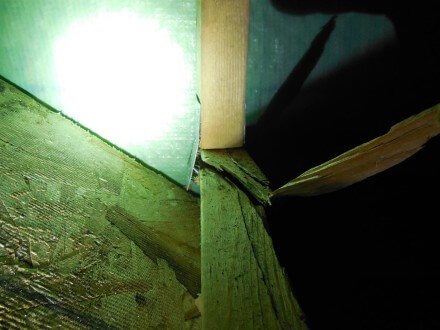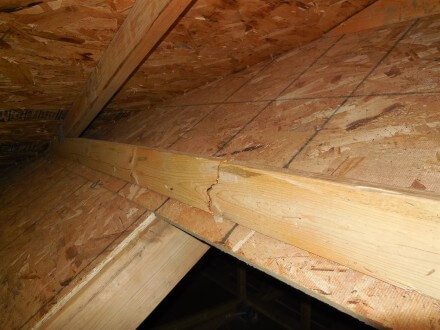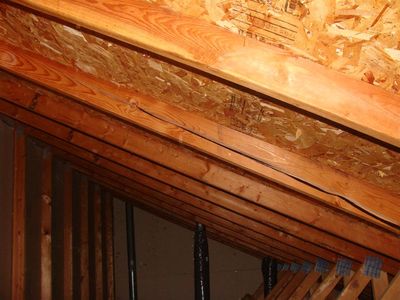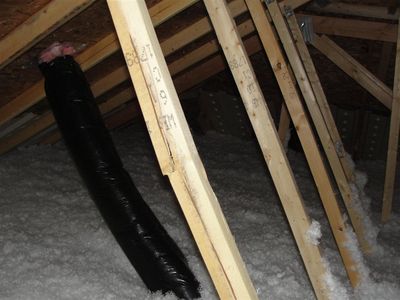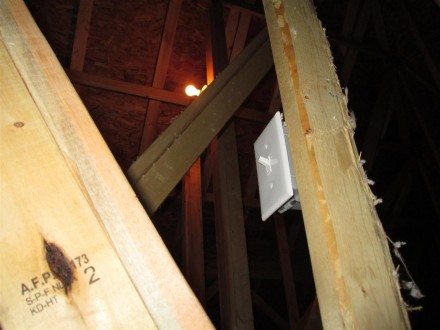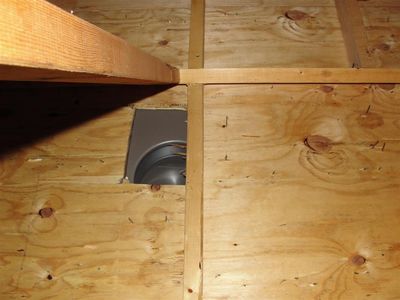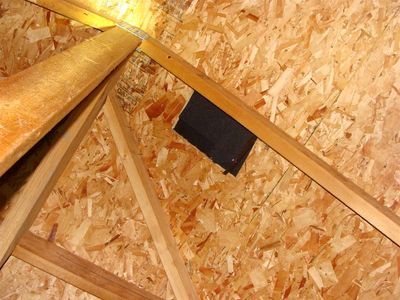A document titled “Inspection Contingency Addendums Protocol” was recently emailed to me. This document, put together by a local home builder, gives “a list of common things found on inspection reports that [the builder] does not agree with.” The document goes on to say “Please note that none of these items will be addressed by [the builder].”
I’m writing this post as somewhat of a rebuttal to that document because while many of the points made by the builder are valid, many of them aren’t. I’m not disclosing the name of the builder because I’m not in the business of singling out any local companies for negative stuff. It’s a fairly long document, so I’m only including part of it.
“1. Auto Closing Mechanism – the installation of an auto closing mechanisms on the door from the garage to the house is a previous requirement of the building code that is no longer required.”
True.
“2. Attic Scuttle Access – There is to be no opening of the attic access for inspections. -and- The only items that could be viewed in this area would be a leaking roof, which would be seen in the ceiling below by water marks; or to verify insulation, which was inspected by the city inspectors during the insulation inspection. -and- The more tech savvy inspectors have infrared reading equipment that can see heat loss to verify insulation without going into the attic scuttle.
No, no, no, and no. That’s all just plain wrong. While it’s true that the more tech savvy inspectors have infrared cameras, there is no way to use an infrared camera to verify that the proper amount of insulation was installed. The only way to know is to look at the insulation.
As for verifying the insulation, city inspectors don’t inspect the insulation. Nobody inspects it. Seriously. I wrote a blog post on this topic a couple of years ago: New Construction Attic Inspections. The photo below could be from about 50% of the new construction inspections that I do. The insulation in this area was about half as deep as it was supposed to be.
As for insulation and water leaks being the only things that could be viewed in the attic, take a look through a few of these photos that have come from new construction attics. New construction. Brand spanking new, inspected by the city and everything. To start, here’s a missing cover plate at a junction box in an attic.
The outlet shown below is over ten feet away from the radon vent. The outlet is there so a radon fan can be installed at the vent if radon levels are high… but what good does it do if it’s ten feet away?
Here’s a home where the builder agreed to install a radon fan, but installed the fan on its side. Radon fans should be installed vertically to help prevent water from accumulating, which can cause the motor to burn out prematurely.
Here’s a GFCI outlet in the attic. GFCI outlets are supposed to be tested every month… not that anyone really does this, but just for the sake of argument, let’s say someone wanted to. Are they really supposed to go into their attic to do this?
When we perform pre-drywall inspections, we frequently find gaps in the attic “lid” that will be attic air leaks once everything is finished. The gap between the two top plates (2x4s) shown below shows an example of a future attic air leak.
Attic air leaks cause frost in the attic. That’s what you’re seeing in the photo below. At the bottom of the frost covered area, the sheathing is already starting to turn black. The funny thing about this one is that the builder wouldn’t give me permission to access the attic through the scuttle hole, but I was able to climb from the garage attic up to the main house second floor attic to inspect it.
Here’s an infrared image of a disconnected bath fan duct below the insulation in an attic on a cool day. There were no visible signs of this defect, but a quick scan with an infrared camera made it quite obvious. The infrared camera also helped us to know exactly where to dig through the insulation to get a photo documenting the condition. Could we have diagnosed this condition by using an infrared camera from inside the home? Heck no.
This next photo shows a disconnected duct from a bathroom exhaust fan. This was a little easier to find.
Trusses can get damaged and broken on new homes. It happens.
Here’s a light that was left on in the attic. The builder made a bit of a stink about me going into the attic, but then reluctantly allowed it.
In the photo below, the roof vents weren’t properly lined up with the holes in the roof sheathing, which reduces the total amount of attic ventilation.
In the next photo, they completely forgot to install a roof vent. I’ve see this happen on a number of new construction homes.
I could go on, but I think I’ve made my point. It’s important for attics to be inspected, even on new homes. Wow, we’re only on item number two of the builder’s list. I guess you can probably see which item on this list got me the most whipped up, huh?
3. Sump Pump Discharge Extensions – [Builder] does not install nor recommend the installation of hose extensions to sump pump discharge outlets; with the rare exception that the Client’s home has a high water table with a sump pump that runs often. Discharge extensions run the risk of freezing up and clogging.
It’s true that discharge extensions run the risk of freezing up and clogging, but it’s not a big deal for a home builder to create a solution for this before the yard is landscaped and sod laid. Click here for more info: Potential for freezing at sump discharge hose.
On the other hand, if a home inspector conducts an inspection and the sump basket is bone dry, I wouldn’t expect the inspector to recommend installing a sump pump discharge extension.
4. Hardwood Floor Finishes – Many model homes are staged with area rugs and as a result some slight fading of the hardwood floors where the areas rugs were not covering the hardwood floors may occur. -and- There is no repair for this except time.
Fair enough, but I don’t think most home inspectors would comment on slight color fading. We’re not there to report on cosmetics.
5. Washing Machine Shutoff – The shutoffs for under the counter washing machines are typically not easily accessible, because they are behind the washer and under the counter top. This arrangement is no different than the water shutoff to the refrigerator’s ice maker line, which is located behind the refrigerator.
I would argue that they’re quite different. Washing machine manufacturers warn folks to shut off the water supply when the washing machine isn’t in use. Here’s what Maytag says:
Here’s what GE says:
I’m sure the rest of the manufacturers have similar warnings. In other words, the shutoff should be accessible. Refrigerator manufacturers have no such warnings.
In the real world, however, nobody shuts off the water to their washing machine when it’s not in use. A better position for the builder to take on this point might be “do you seriously care?”
6. Washing Machine Floor Drains – [Builder] no longer installs floor drains underneath washing machines. Based on feedback from insurance adjuster washing machines do not leak from the bottom. If problems occur, it is from the supply lines to the washing machine. [Builder] recommends the replacement of supply lines every 5 years. If a supply line does fail it will spray throughout the room and no floor drain will prevent the resulting damage.
I don’t have any statistics, but that all sounds about right.
7. Gutters – [Builder] does not typically install nor recommend the installation of gutters. Gutters cause ice dams, which are not covered under warranty.
Gutters don’t cause ice dams. Check out Steve Kuhl’s recent blog post on this topic, which is right on: Gutters don’t cause ice dams. If the builder doesn’t want to recommend or install gutters, that’s fine, but leave it at that. It’s not the builders responsibility to install gutters, and that’s all they ought to say on the matter.
Home inspectors will recommend gutters just about every time, as we should. Gutters go a long way toward preventing water damage. Here are a few blog posts I’ve written on that topic:
- Gutters aren’t just about wet basements
- New construction tip: have your builder plan for water management
- How to inspect your own house, part ii: exterior water management
8. Warranty – Everything built by [Builder] is covered under warranty for 1 year from the date of closing. This warranty covers defects in workmanship and materials. Items such as air conditioning, lawn sprinkler systems, roofs, grading, etc. cannot be evaluated during the winter months. It is common for home inspectors to say things like, “air conditioning cannot be evaluated because it is winter.”
Well, yes. Every home inspector who follows the ASHI Standards of Practice has to put this type of information in their report. Our SOP says we need to provide a written report that states, in addition to many other things, “those systems and components designated for inspection in this Standard that were present at the time of the home inspection but were not inspected and reason(s) they were not inspected.”
There are a number of things we can’t test or inspect when it’s cold and everything is buried in snow. That’s just life in Minnesota. On the plus side, we don’t have to worry about termites here. It’s too cold.
9. Exterior AC Unit Covering – It has recently become more common for this issue to be included in inspection reports. Exterior AC units are meant to have water and rain on and running into them. These units should have a board placed on top of them in the winter, to prevent icicles from dropping into the units, no further covering is needed.
That’s correct. Personally, I don’t even bother putting a board on top. I blogged about that many years ago: Should I Cover My Air Conditioner?
10. Paint/Stain Touch Ups
I won’t bore anyone with this item. This is all cosmetic stuff that nobody needs a home inspector for.
11. Water Heater – Some inspectors make issue with the capacity of the water heater in relation to the capacity of a soaking tub or the number of bathrooms in a home. This is relative and will be different based on the number of people living in the house and the expectation of the tub user as to how hot the water is desired. It is commonly accepted within the marketplace to have a 50 gallon hot water heater in lieu of a 40 gallon hot water heater when there are multiple bathrooms and/or a soaking tub of some type. Some of our homes have higher capacity hot water heaters due to available rebates or discounts, but 50 gallon is customary and typical and no accommodation for larger capacities than what the house is being sold with will be made.
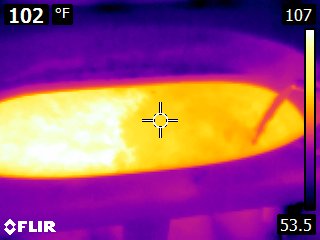 I’m one of those inspectors who makes an issue of the capacity of the water heater in relation to the capacity of a soaking tub. I don’t tell my clients the builder needs to replace the water heater, but I try to let them know if the water heater is only large enough to fill the tub halfway up with hot water. If you have a 100 gallon tub and a 50 gallon water heater, either the water heater is too small or the bath tub is too big. Take your pick. It’s even worse when the bath tub is a whirlpool, and it won’t fill up with enough hot water to bury the jets. I blogged about this topic here: Is your water heater large enough for your bathtub?
I’m one of those inspectors who makes an issue of the capacity of the water heater in relation to the capacity of a soaking tub. I don’t tell my clients the builder needs to replace the water heater, but I try to let them know if the water heater is only large enough to fill the tub halfway up with hot water. If you have a 100 gallon tub and a 50 gallon water heater, either the water heater is too small or the bath tub is too big. Take your pick. It’s even worse when the bath tub is a whirlpool, and it won’t fill up with enough hot water to bury the jets. I blogged about this topic here: Is your water heater large enough for your bathtub?
Yes, sure, it meets code to put in a water heater that’s way too stinking small for the bathtub, but that doesn’t make it right.
Also, the part about how different bath tub users will have different expectations as to how hot the water should be… doesn’t hold water. There’s a very small range of acceptable water temperatures for a bathtub. At 100 degrees, a bathtub will actually seem a little cool, but might be ok for little kids. At 105 degrees, getting into the tub is a little painful.
Ok, that concludes my rebuttal. My advice to this home builder and any other home builder who puts together documents like this would be to make the document short and sweet, clearly state what you’re willing to do and not do, and stick to the facts. My advice to anyone buying a new construction home is to hire a private home inspector, and make sure the builder will allow the home inspector to inspect the attic.
Related Posts:
- Photos From New Construction Home Inspections, part I
- Photos From New Construction Home Inspections, part II
- Photos From New Construction Home Inspections, part III
- Photos From New Construction Home Inspections, part IV
Author: Reuben Saltzman, Structure Tech Home Inspections
Shortcut: attic defects

